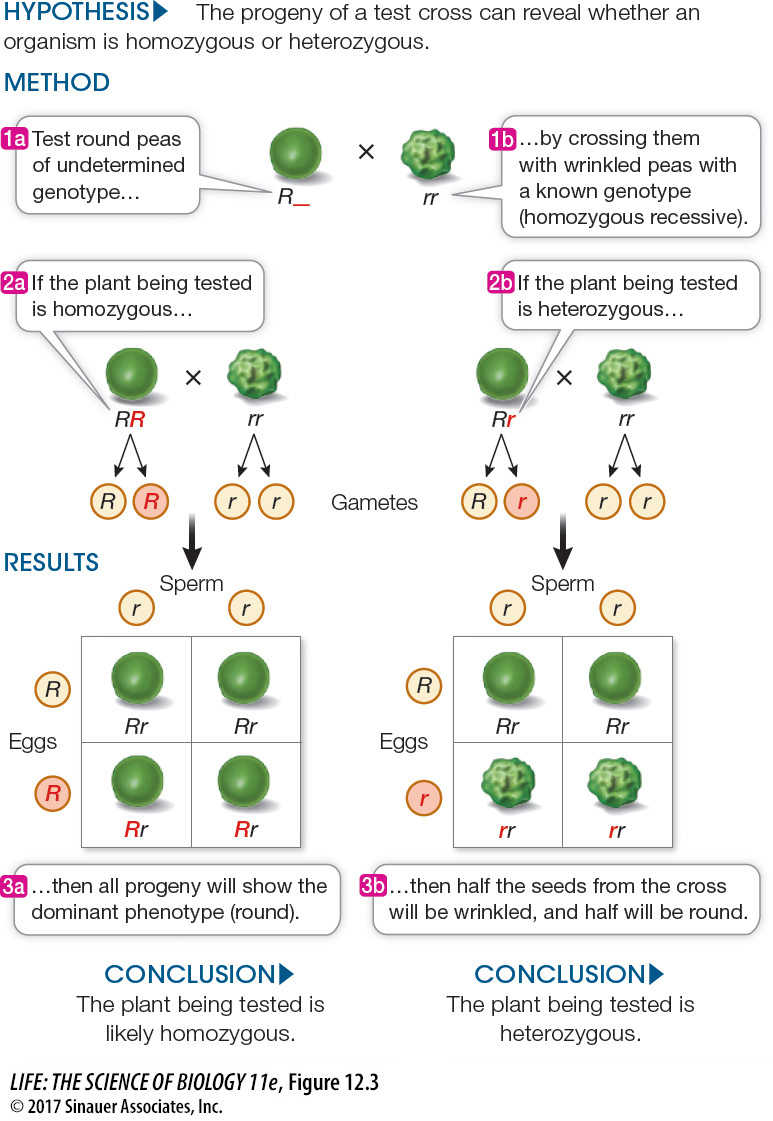Mendel verified his hypotheses by performing test crosses
Mendel arrived at his laws of inheritance by developing a series of hypotheses and then designing experiments to test them. One hypothesis was that there are two possible allele combinations (RR or Rr) for seeds with the round phenotype. Mendel verified this hypothesis by performing test crosses with F1 seeds derived from a variety of other crosses. A test cross is used to determine whether an individual showing a dominant trait is homozygous or heterozygous. The individual in question is crossed with an individual that is homozygous for the recessive allele—
The recessive homozygote for the seed shape gene has wrinkled seeds and the genotype rr. The individual being tested may be described initially as R_ because we do not yet know the identity of the second allele. We can predict two possible results:
If the individual being tested is homozygous dominant (RR), all offspring of the test cross will be Rr and show the dominant trait (round seeds) (Figure 12.3, left).
If the individual being tested is heterozygous (Rr), then approximately half the offspring of the test cross will be heterozygous and show the dominant trait (Rr), and the other half will be homozygous for the recessive allele (rr) (Figure 12.3, right).
Mendel obtained results consistent with both of these predictions; thus his hypothesis accurately predicted the results of his test crosses.
experiment
Figure 12.3 Homozygous or Heterozygous?
Original Paper: The original German version of Mendel’s paper, Versuche uber Pflanzen-
An individual with a dominant phenotype may have either a homozygous or a heterozygous genotype. The test cross determines genotype.

Activity 12.1 Homozygous or Heterozygous?